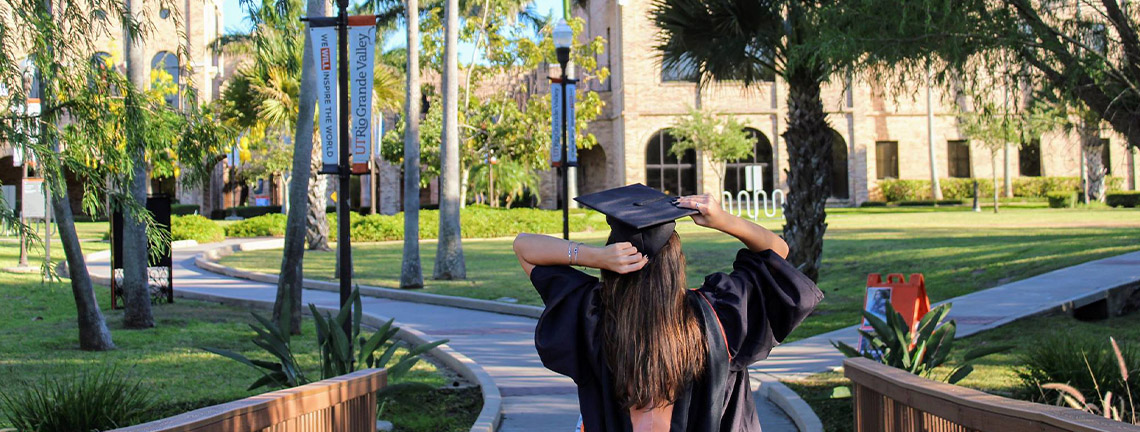
Theses and Dissertations
Date of Award
8-2022
Document Type
Thesis
Degree Name
Master of Science (MS)
Department
Agricultural, Environmental, and Sustainability Sciences
First Advisor
Dr. Engil Isadora Pujol Pereira
Second Advisor
Dr. Chu-Lin Cheng
Third Advisor
Dr. James Jihoon Kang
Abstract
Conventional farming is a common practice in Lower Rio Grande Valley (LRGV) and the application of nitrogen fertilizer is essential for plant growth and support. However, managing the rate of nitrogen that is applied can benefit farmers financially and reduce nitrate leaching that can have an adverse effect on the local environment and aquatic systems, e.g., rivers and estuaries. Sandy soils are more vulnerable to water infiltration due to the large proportion of macropores. This study aims to (i) assess how nitrate from a variety of fertilizers (i.e., synthetic and organic) distributes on the top 60 cm layer of a sandy soil after a simulated rain event and (ii) evaluate whether microbial activities (i.e., soil respiration and Urease and NAGase rates) in organically fertilized conditions (i.e., fish and chicken manure fertilizer) can maintain nitrate and ammonium supply to the same levels as those in inorganically fertilized conditions (urea and calcium nitrate). Soil nitrate concentrations are hypothesized to be larger in soils fertilized with synthetic than with organic fertilizer. Microbial activities, however, are expected to be larger in soils with organic fertilizer than with synthetic fertilizer. The goal is to provide Lower Rio Grande Valley farmers an insight for the potential nitrate losses from their field and whether microbial communities in organically fertilized soils can maintain the supply of ammonium and nitrate. It will also allow farmers to reconsider the amount of nitrogen fertilizer that is needed to be applied on their cropland. A field experiment was conducted in Lasara, TX on loamy sand soils. The experimental design included three blocks, each containing 5 fertilizer treatments comprised of organic and synthetic fertilizer. It included: “No fertilizer” (control), “urea”, “calcium nitrate”, “chicken manure”, and “fish fertilizer”. Nitrogen fertilizer was applied at a rate of 100 lbs. per acre. Soil samples were collected at four different depths that include, 0-15 cm, 15-30 cm, 30-45 cm, and 45-60 cm for each plot. The results showed that calcium nitrate had the largest nitrate and ammonium concentration across all depths, indicating a larger potential for percolation and environmental losses compared to other fertilizers. There was no significant variation of nitrate concentration across depths. The results also showed fertilizer treatments did not alter NAGase enzyme activities, however, they were progressively reduced with depth, contrary to moisture, which increases with depth. Urease enzymes were affected by fertilizer type and results showed high levels of enzymatic activity in soils with applied fish fertilizer. In conclusion, this research showed that calcium nitrate has the largest potential to distribute nitrate through the soil compared to other sources of nitrogen fertilizer. Hence, farmers should consider less mobile nitrogen fertilizer sources. Upon applying fish fertilizers, farmers can expect an enhancement on urease activities, which will help with the supply of inorganic nitrogen.
Recommended Citation
De la Rosa, Gladys, "Assessment of Nitrogen-Based Fertilizer Transport and Microbial Activities in Sandy Soil Profiles in South Texas" (2022). Theses and Dissertations. 1033.
https://scholarworks.utrgv.edu/etd/1033


Comments
Copyright 2022 Gladys De La Rosa. All Rights Reserved.
https://go.openathens.net/redirector/utrgv.edu?url=https://www.proquest.com/dissertations-theses/assessment-nitrogen-based-fertilizer-transport/docview/2748416529/se-2?accountid=7119